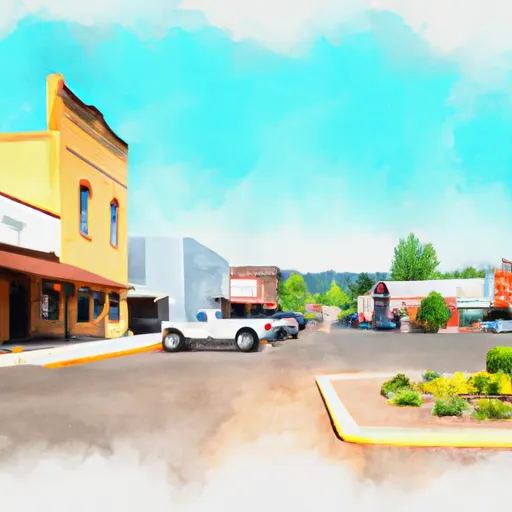°F
°F
mph
Windspeed
%
Humidity











Madras, Oregon is a small town located in the central part of the state. It has a semi-arid climate with hot, dry summers and cold winters. Summers are typically characterized by temperatures reaching above 90°F (32°C) and low humidity. Winters see cooler temperatures, often dropping below freezing, with occasional snowfall.
The hydrology constituents in Madras primarily include the Deschutes River and its tributaries. The river provides opportunities for fishing, boating, and other water-based activities. Additionally, there are several reservoirs in the area that offer recreational opportunities such as swimming, kayaking, and paddleboarding.
Madras boasts a variety of outdoor recreation opportunities. The nearby Deschutes National Forest provides options for hiking, mountain biking, camping, and wildlife viewing. The area is home to several scenic trails, including the Smith Rock State Park, known for its towering rock formations and excellent rock climbing routes. Outdoor enthusiasts can also explore the nearby Cascade Mountains, offering opportunities for skiing, snowboarding, and snowshoeing during the winter months.
With its pleasant climate, abundant water resources, and diverse outdoor recreation opportunities, Madras is an attractive destination for nature lovers and adventure seekers.
Weather Forecast
Madras receives approximately 287mm of rain per year, with humidity levels near 86% and air temperatures averaging around 10°C. Madras has a plant hardyness factor of 6, meaning plants and agriculture in this region thrive during a short period during spring and early summer. Most plants will die off during the colder winter months.
Regional Streamflow Levels
125
Cubic Feet Per Second
951
Cubic Feet Per Second
8
Cubic Feet Per Second
6,640
Cubic Feet Per Second
Nearby Camping
| Camping Area | Reservations | Toilets | Showers |
|---|---|---|---|
| Haystack Lake | |||
| Trout Creek - Madras | |||
| Cove Palisades State Park | |||
| Madras City Park | |||
| Pelton Park | |||
| Jefferson County Fairgrounds RV |



